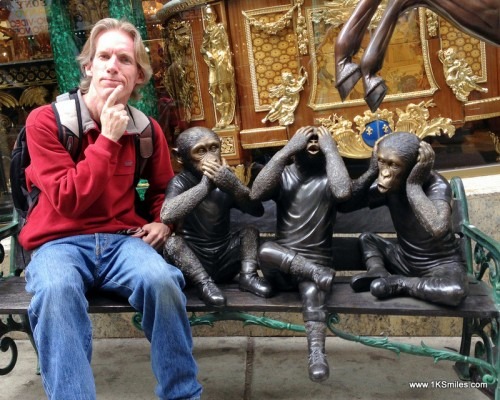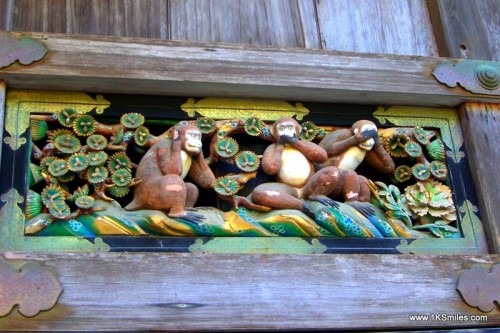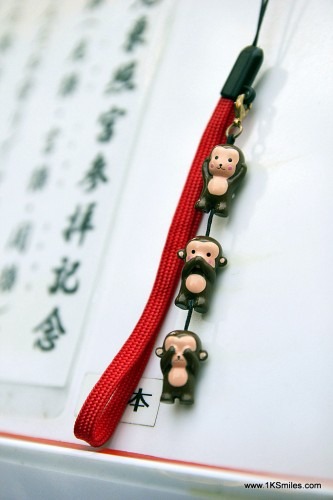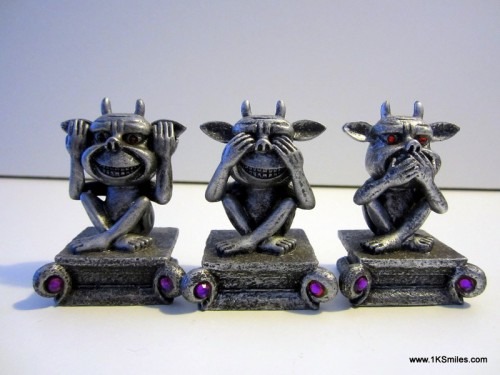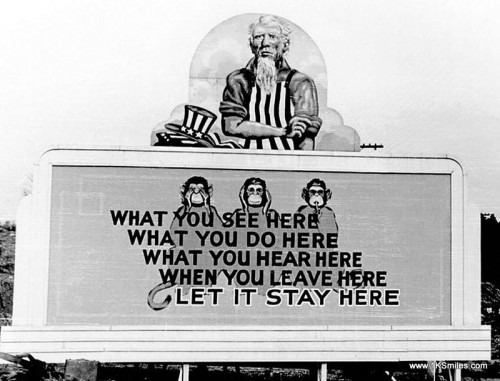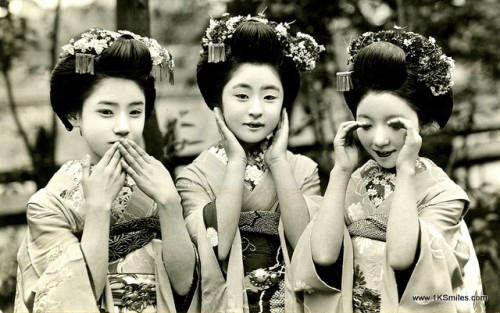The Three Wise Monkeys have been a favorite of mine for as long as I can remember although when I was young they just made me smile. As I am older and a little wiser, they make me smile as well as think. They represent a good philosophy for one to live one’s life.
The three wise monkeys are Mizaru, covering his eyes, who sees no evil; Kikazaru, covering his ears, who hears no evil; and Iwazaru, covering his mouth, who speaks no evil. They are sometimes called the three mystic apes and together embody the proverbial principle to “see no evil, hear no evil, speak no evil”.
It all started with a 17th-century carving over a door of the Tōshō-gū shrine in Nikkō, Japan carved by Hidari Jingoro, and believed to have incorporated Confucius’s Code of Conduct. At the shrine there are a total of eight panels and the iconic three wise monkeys are on panel two. The philosophy, however, probably originally came to Japan with a Tendai-Buddhist legend, from China in the 8th century.
In China, a similar phrase exists in the Analects of Confucius from 2nd to 4th century B.C.: “Look not at what is contrary to propriety; listen not to what is contrary to propriety; speak not what is contrary to propriety; make no movement which is contrary to propriety” It may be that this phrase was shortened and simplified after it was brought into Japan.
But wait. That is four things and there are only three wise monkeys. What is going on?
I remember a fourth monkey and with him went the phrase ‘Have no fun.’ Wondering about him I visited Three-Monkeys.info where they had this to say about the mysterious fourth monkey: “A fourth monkey (usually called “Do no Evil, Have no Fun or Have no Sex”) is a later addition to the well-known trio, but has nothing to do with the original Koshin belief. Monkey number 4 most probably has been added by the souvenir industry.”
Mahatma Gandhi’s who had a lifestyle of non-possession had one notable exception- a small statue of the three wise monkeys. Today, a larger representation of the three monkeys is prominently displayed at the Sabarmati Ashram in Ahmedabad, Gujarat, where Gandhi lived from 1915 to 1930 and from where he departed on his famous salt march.
The three wise monkeys have spawned many versions from the original. I have even seen Hello Kitty versions. Here are a couple that I like.
Here is a billboard, probably from the 1940s encouraging secrecy amongst Oak Ridge, Arkansas workers during war time. I can’t help but think that perhaps this was the inspiration for the popular Las Vegas slogan, “What happens in Vegas stays in Vegas.”
Have you ever seen the three wise monkeys? Did you ever see the fourth? Which is your favorite? Share your thoughts in the comments. Would love to hear from you.
If you liked this or any other posts you read on 1KSmiles, please share it with your friends using the Shareaholic buttons below.
And feel free to ‘like’ us on our Facebook page.

